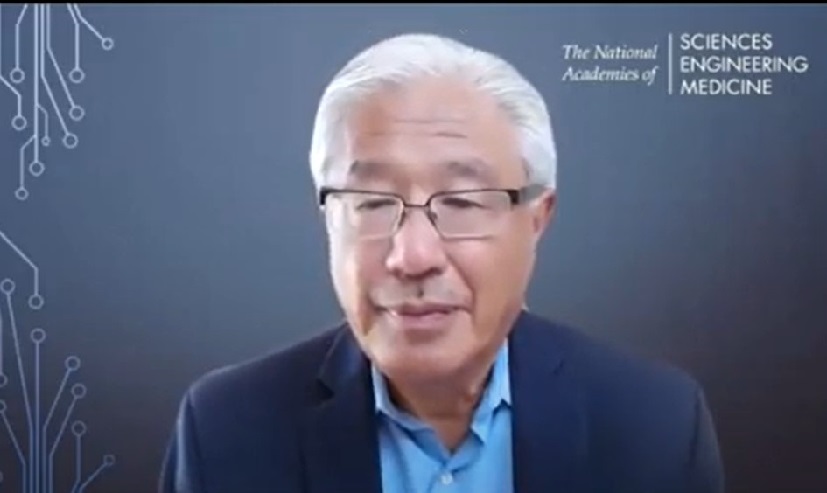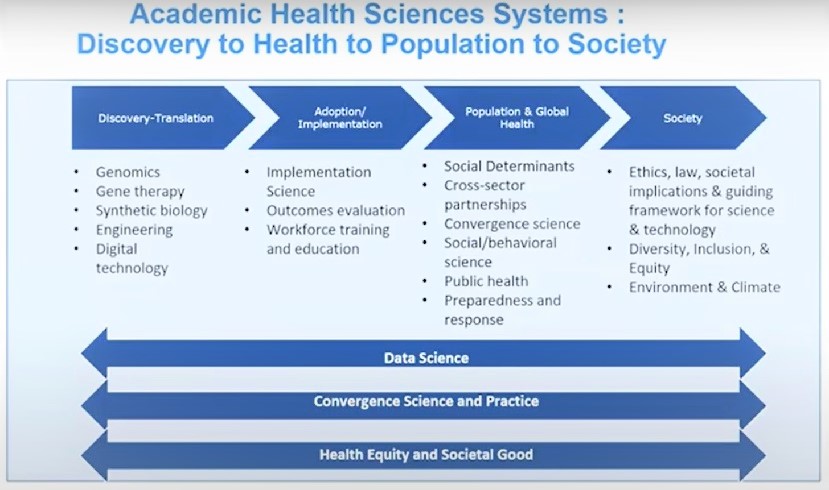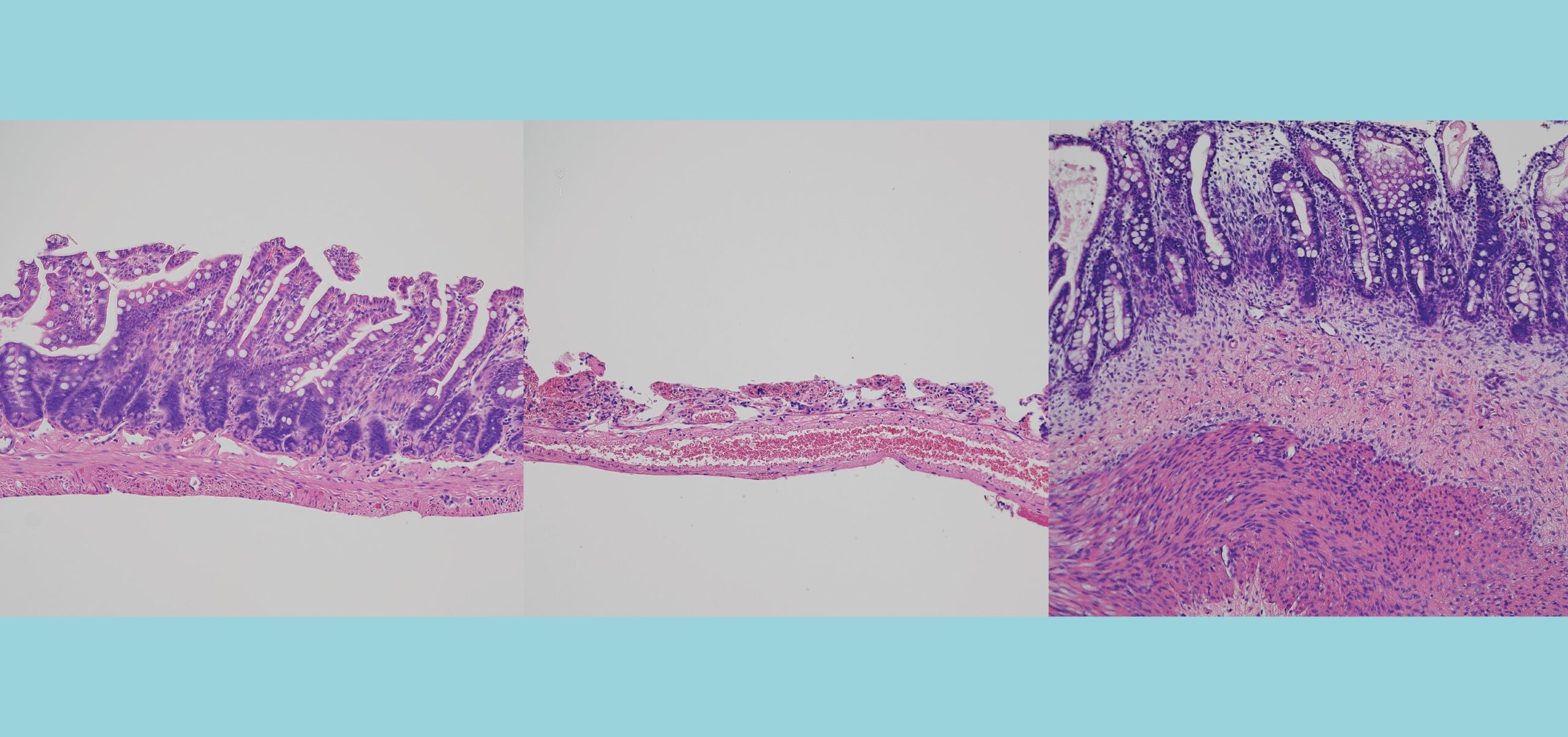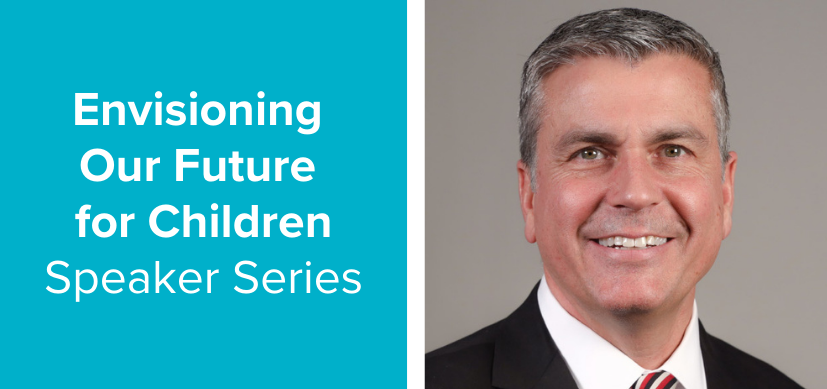With Care, Medicine’s Brave New World Can Be Bright
Post Date: August 19, 2021 | Publish Date:

National Academy of Medicine President Envisions Dazzling Health Improvements Ahead While Challenging Leaders to Drive Innovation With a Sense of Justice
The novel “Brave New World,” written by Aldous Huxley in 1932, projects a dystopian future for a society unable to harness the power of technology for good. But the future of medical discovery need not be so grim, says Victor Dzau, MD.
As the leader of one of the world’s top medical research organizations, Dzau wrestles daily with some of the deepest questions facing science and medicine. Among them, how to inspire discovery while also installing guardrails at a global scale to reduce the risk of major scientific breakthroughs being twisted into weapons. And how to guide the dissemination of discovery so that all people share in the benefits, not just the rich.
Dzau spoke about this challenging task to a virtual audience Aug. 18, 2021, as the latest leading voice to participate in the Cincinnati Children’s Research Foundation’s “Envisioning Our Future For Children” speaker series.
Dzau reflected on a 2017 essay, “The Next 7 Great Achievements in Pediatric Research,” which was co-authored by Tina Cheng MD, MPH, who now serves as Director of the Cincinnati Children’s Research Foundation, Chief Medical Officer, of Cincinnati Children’s, and the Chair of Pediatrics at the University of Cincinnati College of Medicine.
The Next 7:
- More Pediatric Immunizations to Prevent Emerging and Persistent Diseases
- Development of Promising Cancer Immunotherapies
- Making Genomic Discoveries to Predict, Prevent, and Treat Disease
- Using Big Data to Study the Life Course of Disease to Create More Childhood Interventions for Adult Conditions
- Analyzing the Interaction of Biology and the Physical and Social Environment to Improve Health
- Applying Quality Improvement Science to Systems of Care
- Disseminating Research to Reduce Global Poverty
Dzau says all seven of those concepts would be worthy goals to achieve. He proposes adding two more to the list: Transforming Mental Health Care and Tackling the Health Implications of Climate Change.
Such goals may be tall orders, but Dzau says academic medical centers are best positioned to think broadly about how society and technology interact.
“The future is really bright when you look at all these possibilities,” Dzau said. “But we as scientists, clinicians, and socially conscious individuals, we know that advancing technology comes with increased responsibility. No longer can scientists and physicians just do their science without considering the social implications of their work.”
He cited several examples of how thought leaders have convened to consider the implications of new technologies such as recombinant DNA in the 1970s, the early IVF procedures that led to the world’s first “test tube baby,” and the cloning of Dolly the sheep. Now the scientific world wrestles with the potential good or ill of gene editing technologies, artificial intelligence, synthetic biology and more.
Dzau says the medical world has demonstrated some restraint. For example, there is widespread agreement that gene editing should not be done in human germline cells that could allow inherited traits to be passed down. While citing early promising examples of somatic gene editing in conditions including sickle cell disease and cystic fibrosis, he also noted that such research has proceeded with responsible caution.
However, more structure is needed.
The 2018 scandal that occurred when a Chinese scientist announced the birth of a gene-edited child was a “wake up call,” Dzau says. Even though that research was widely condemned, and the scientist was sent to prison, the National Academy of Medicine and other organizations are rolling out new ideas for guiding ethical considerations for emerging technologies.
Can such guidelines have any teeth? It may require global-scale treaties much like those negotiated by superpowers to limit the use and spread of nuclear weapons, Dzau says.

“It used to be bench to bedside. Then it was bench to bedside to population. Now we are advocating bench to bedside to population to a just society.”
— Victor Dzau, MD
Looking forward, academic medical centers will need to do even more to break down campus walls and connect with wider communities. Perhaps discussing the social implications of new discoveries should include more elements of big universities, such as law schools. Likewise, more people from underrepresented populations who have long been excluded from high-level policy settings need more seats at the table.
“You in Cincinnati, you are an anchor institution in your community. You hire people. You provide research. You provide care. You provide resources,” Dzau says. “And you need to think as a leader in society about ethical and social issues.”







